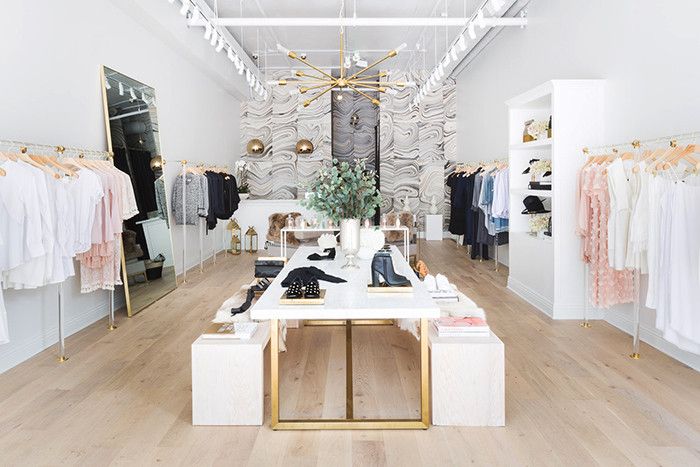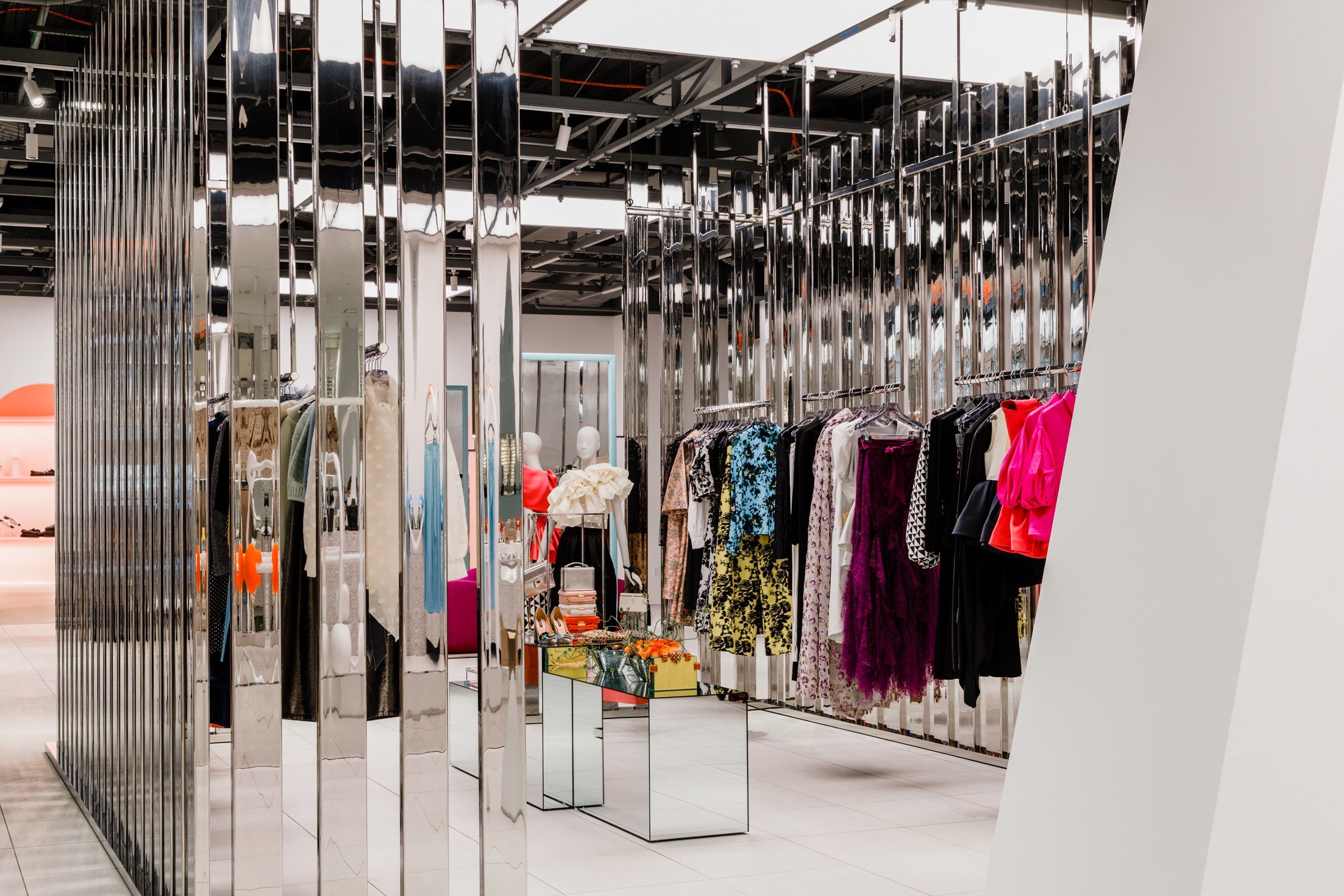Discovering the Advancement and Influence of Clothing on Modern Fashion Trends
The evolution of apparel has significantly affected modern-day style fads, merging historic precedents with innovative advancements. Iconic numbers like Coco Chanel and Yves Saint Laurent transformed the style market by introducing principles that prioritize convenience and ease of access, which proceed to resonate today.
Historical Style Influencers
In the tapestry of fashion history, particular numbers have left an enduring mark, shaping the fads and styles that define entire eras. Coco Chanel, an advanced designer, redefined females's style by introducing comfy, elegant apparel that left from limiting bodices. Her iconic Chanel fit and little black gown have come to be ageless staples in wardrobes worldwide. Christian Dior's post-war "New Look" in 1947, with its event of feminineness through full skirts and cinched waists, marked a return to opulence and has continued to affect designers.
Elsa Schiaparelli is one more pivotal figure, renowned for her avant-garde layouts that incorporated surrealist art, teaming up with Salvador Dalí to produce whimsical pieces that tested standard aesthetic appeals. Her ingenious use shade and bold patterns resounds in contemporary fashion. Yves Saint Laurent, meanwhile, democratized haute couture with prêt-à-porter collections, bringing path designs to the masses and establishing a precedent for modern-day ready-to-wear lines.
These dreamers, amongst others, not only changed fashion in their times yet additionally established enduring fads that resonate in today's fashion business, providing a foundation upon which modern designers remain to construct and innovate. Their traditions emphasize the relevance of imagination and daring in vogue's ever-evolving story.
Technological Improvements in Fashion
Amidst the vibrant landscape of the fashion business, technical improvements stand at the center of development, improving how developers create and consumers involve with style. The assimilation of 3D printing has transformed style processes, allowing designers to experiment with complex frameworks and sustainable products that were formerly inconceivable. This technology facilitates rapid prototyping, minimizing waste and speeding up manufacturing times.

Smart fabrics, embedding technology right into textiles, are also transforming the sector. Innovations like temperature-regulating and self-cleaning textiles offer improved capability and comfort. Wearable innovation, integrating attributes like health and fitness monitoring and communication, includes a brand-new measurement to style, merging aesthetic appeals with practicality.
Cultural Changes and Style
As technical advancements proceed to improve the fashion business, social changes are just as prominent, redefining design and consumer preferences. Recently, the increase of social media systems has sped up the dissemination of international style fads, allowing diverse social impacts to exist together and assemble. This electronic interconnectivity has actually assisted in the fast exchange of concepts, causing a more inclusive and eclectic analysis of design that mirrors the complex nature of contemporary society.
Social understanding and appreciation have actually triggered developers to draw ideas from a broader spectrum of historical and ethnic contexts, incorporating traditional motifs with contemporary aesthetics. This fusion has my site actually led to style that resonates with a wider target market, advertising a sense of identity and belonging across various demographics. In addition, the raising demand for customization has actually driven brands to supply customizable choices, enabling customers to express individuality while reflecting their cultural heritage.
Additionally, shifting societal values have actually affected style, with inclusivity and variety becoming central themes. The sector has actually started to welcome versions and influencers of numerous physique, ethnic backgrounds, and gender identities, difficult traditional charm criteria. This makeover underscores the power of cultural changes fit the future of style, as design becomes an extra authentic expression of individual and collective identification.
Sustainability and Modern Layout
While the fashion market remains to develop, the crucial for sustainability has ended up being progressively urgent, influencing modern-day layout methods. This shift aims to attend to moral factors to consider and environmental worries, leading to a reevaluation of conventional manufacturing methods. Designers are currently integrating sustainable products, such as natural cotton, recycled polyester, and biodegradable textiles, into their collections, decreasing the eco-friendly impact of fashion. The surge of sluggish fashion, which stresses high quality over quantity, urges customers to buy classic pieces rather than short-term fads.
Moreover, modern style is characterized by its innovation in minimizing waste and advertising circularity. This technique not only minimizes environmental impact but also enhances the social responsibility of fashion residences.

Future Trends in vogue
-a1f7b3f.jpg)
Sustainability will proceed to be a driving pressure in forming future fashion trends. The industry is progressively taking on environmentally friendly products and honest manufacturing approaches, replying to a growing consumer need for accountable methods. Innovations such as bio-fabricated materials and closed-loop recycling systems are set to redefine how garments is produced and taken in, lowering ecological effect while keeping design and high quality.
Cultural shifts, consisting of the surge of inclusivity and diversity, will certainly additionally play an essential duty. As society comes to be much more familiar with social concerns, style is anticipated to end up being a platform for expression and modification. Designers will likely concentrate on producing collections that mirror a more comprehensive variety of experiences and identifications, championing depiction and access.
Final Thought
The advancement of clothes significantly impacts Extra resources modern-day style patterns, where historic influences combine with modern styles. This continuous advancement highlights fashion's function as a mirror to societal values and technical advancement, recommending a future abundant with innovation and inclusivity.
The development of garments has actually substantially influenced contemporary style fads, combining historical precedents with cutting-edge advancements.In the middle of the vibrant landscape of the style sector, technical innovations stand at the forefront of advancement, improving just how developers produce and consumers engage with fashion.While the fashion market continues to develop, the critical for sustainability has ended up being increasingly immediate, affecting contemporary design practices. As sustainability ends up being ingrained in contemporary layout, it paves the method for a more aware and responsible fashion market.
The evolution of clothing considerably influences modern fashion fads, where historical impacts combine with modern layouts.